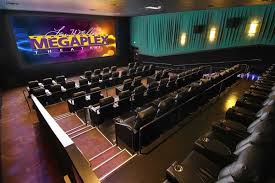Every year, small businesses in the U.S. pour $172 billion into local advertising. That’s more than the annual revenue of McDonald’s, Nike, and Netflix combined. And yet, most of it is spent with little to no understanding of whether it actually works.
Let that sink in.
Despite living in a data-rich world, local advertising remains a black box. And the businesses who need the most help—your neighborhood restaurants, auto shops, fitness studios, and coffee spots—are the ones flying blind.
Who Owns the Customer?
Not the business. That’s the core problem.
Ad platforms like Google, Meta, and TikTok have built empires by turning consumers into the product. They capture the user’s attention, sell access to it, and own all the data. Small businesses? They just rent access.
Local businesses pay $10 to $50 per lead to platforms that:
- Don’t show who the customer is
- Don’t connect the dots between online and in-store behavior
- Don’t provide retention data
There is no loop. No feedback. No ownership. Just rent, rent, rent.
The Illusion of ROI
We’re told digital is better because it’s trackable. But in local commerce, that’s only half true.
The best attribution systems exist within the walls of the platforms themselves. Facebook knows exactly what drives a click or a visit to a website. But once that person walks into a store? The signal dies.
So businesses revert to gut feel, not data.
This is where Groupon told the truth. By showing merchants the real cost per customer, the real margin hit, and the actual redemptions, Groupon inadvertently broke the spell. It wasn’t that their model was worse than Facebook’s—it was just more honest.
The Real Asymmetry
The internet runs on advertising. And mobile apps? Most wouldn’t exist without ad-based monetization.
But here’s the kicker:
- Platforms are optimized for their revenue, not the advertiser’s results
- The data flows one way: into the platform
- Consumers get free content, but become invisible the moment they engage locally
And let’s not forget: Google, Apple, and Meta know exactly where consumers are. They track us with incredible precision in both the digital and physical world. Apple doesn’t need to ask where you work—they see where you drive every morning. They know your favorite restaurants, gyms, and coffee shops. If they wanted to, they could connect all the dots from ad exposure to foot traffic to purchase. But they don’t.
Why? Because privacy laws, iOS updates, and rising consumer awareness have made it politically toxic. But more importantly: true offline attribution would hurt their bottom line. If merchants saw the real data, they might spend less.
What If Local Had True Attribution?
Imagine a world where:
- A business knows exactly who saw their offer
- Which users walked in, what they spent, and whether they came back
- Loyalty, referral, and feedback loops are built into the same system
- The data belongs to the business, not the ad platform
It’s not science fiction. It’s just infrastructure we haven’t built yet. Or rather, it’s infrastructure the platforms have no incentive to build.
Because the truth is, attribution threatens the ad platforms’ margins. If local businesses saw the actual cost-per-conversion across platforms, many would pause their campaigns tomorrow.
What Comes Next
The next generation of local advertising won’t look like ads at all. It will look like ownership.
- Direct consumer engagement
- In-app rewards for actions like check-ins, referrals, and feedback
- Data transparency
- Offline attribution
This is where the $172 billion opportunity lies.
For 20 years, platforms have monetized small business desperation. Now it’s time to flip the script.
Because in a world where platforms own the data, the only way small businesses win… is by taking it back.






